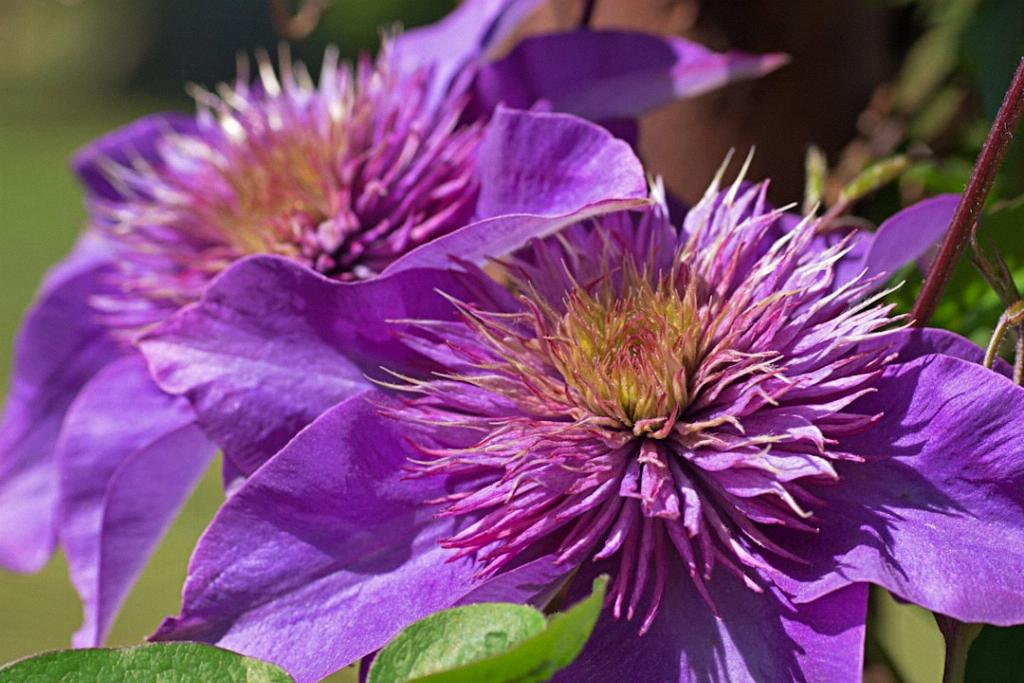Pruning your Clematis is essential to ensure the health and vitality of this beautiful flowering vine. Without regular pruning, Clematis plants can quickly become unruly, with a tangle of stems that hinder proper growth and flowering. By taking the time to prune your Clematis, you not only encourage strong growth and abundant blooms, but you also help to keep the plant looking its best.
One of the primary reasons to prune your Clematis is to prevent it from becoming bare at the base. Without pruning, all the flowers will end up high on the plant, leaving the lower part of the vine looking sparse and unattractive. Regular pruning helps to distribute the flowers more evenly along the stems, creating a more balanced and visually appealing display.
Additionally, pruning your Clematis helps to promote new growth and flowering. By cutting back old growth, you stimulate the plant to produce fresh shoots and buds, resulting in more blooms throughout the growing season. This rejuvenation process is crucial for maintaining the health and vigor of your Clematis over time.
Another benefit of pruning your Clematis is that it helps to keep the plant within bounds. Clematis vines are vigorous growers, and without regular pruning, they can quickly outgrow their allotted space. By trimming back excess growth, you can prevent your Clematis from overtaking other plants or structures in your garden.
When it comes to pruning Clematis, timing is key. Different varieties of Clematis may require pruning at different times of the year, depending on their flowering habits. Generally, early-flowering Clematis should be pruned right after they finish blooming, while late-flowering varieties can be pruned in late winter or early spring.
It’s essential to know the specific pruning requirements of your Clematis species to ensure that you prune them correctly. Some Clematis bloom on old wood, meaning they produce flowers on the previous year’s growth and should be pruned lightly after blooming. Others bloom on new wood, so they can be pruned more drastically in late winter or early spring.
When pruning your Clematis, always use sharp, clean shears to make clean cuts. Avoid tearing or crushing the stems, as this can lead to infection and disease. Cut back any dead or damaged growth, as well as tangled or crossing stems that can inhibit airflow and sunlight penetration.
It’s important to tailor your pruning approach to the specific needs of your Clematis plant. While some varieties require more aggressive pruning to maintain their shape and encourage blooming, others may only need light trimming to keep them looking neat and tidy. Take the time to research your Clematis species and understand its unique pruning requirements.
Regular pruning can also help to prevent disease and pest infestations in your Clematis. Removing dead or diseased wood can improve airflow around the plant, reducing the risk of fungal infections. By staying on top of pruning tasks, you can keep your Clematis healthy and vibrant throughout the growing season.
Remember that pruning is not a one-time task but an ongoing process that should be done regularly to maintain the health and beauty of your Clematis. By incorporating pruning into your garden maintenance routine, you can ensure that your Clematis continues to thrive and delight you with its stunning blooms year after year.
In conclusion, pruning your Clematis is a vital task that helps to promote growth, flowering, and overall health in this beautiful vine. By understanding the benefits of pruning and following proper techniques for your specific Clematis species, you can enjoy a lush, vibrant garden filled with stunning blooms and healthy plants.

